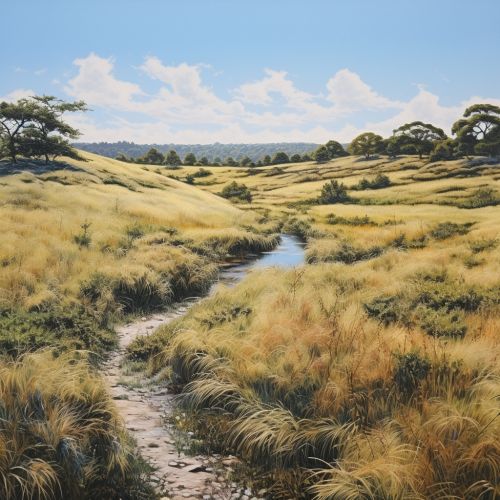Esker
Formation
Eskers are formed when sediment, often sand and gravel, is deposited by meltwater from glaciers. The process begins when a glacier retreats, leaving behind a tunnel filled with meltwater. As the water flows through the tunnel, it carries with it sediment from the glacier. This sediment is then deposited in the tunnel, creating a ridge-like structure. Over time, the ice melts away, leaving the esker behind. The size and shape of an esker can vary greatly, depending on the amount of sediment available and the speed and direction of the meltwater flow.


Characteristics
Eskers are typically long, narrow ridges of sediment, often winding and irregular in shape. They can range in length from a few meters to several kilometers, and in height from less than a meter to over 100 meters. The composition of an esker can vary, but it is typically made up of sand and gravel, with occasional larger boulders. The sediment in an esker is often well-sorted, meaning that the particles are of a similar size. This is due to the sorting action of the meltwater, which tends to carry away smaller particles and leave behind larger ones.
Distribution
Eskers are found in many parts of the world, particularly in areas that were covered by glaciers during the last ice age. This includes much of northern Europe, North America, and parts of Asia. In some areas, eskers are a prominent feature of the landscape, forming long, winding ridges that can be seen from a distance. In other areas, they may be less obvious, buried beneath vegetation or other sediment.
Significance
Eskers have a number of important roles in the landscape. They can act as natural levees, preventing flooding in low-lying areas. They can also serve as a source of sand and gravel for construction and other uses. In some areas, eskers are important habitats for wildlife, providing a unique environment for a variety of plant and animal species. In addition, eskers are of interest to geologists, as they can provide valuable information about past glacial activity and climate change.
